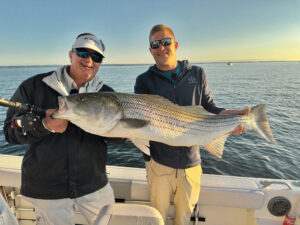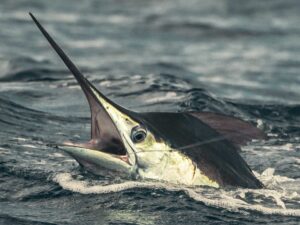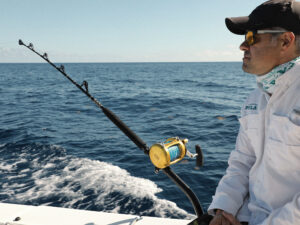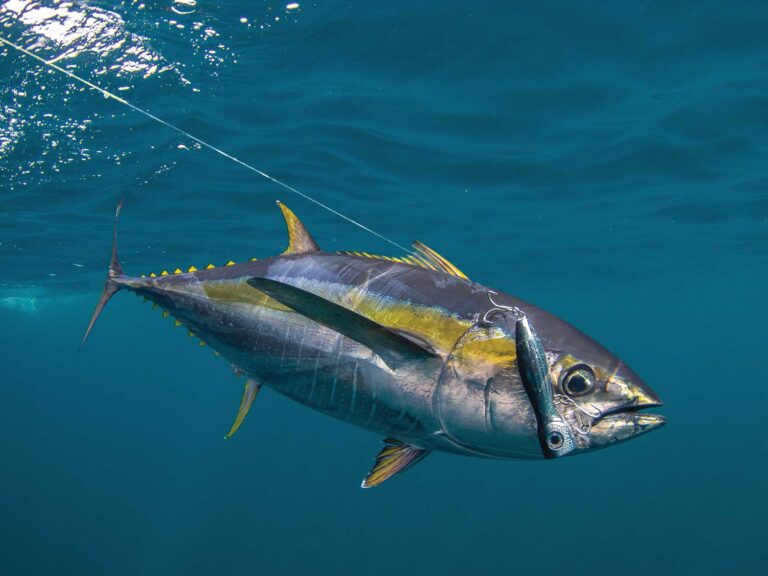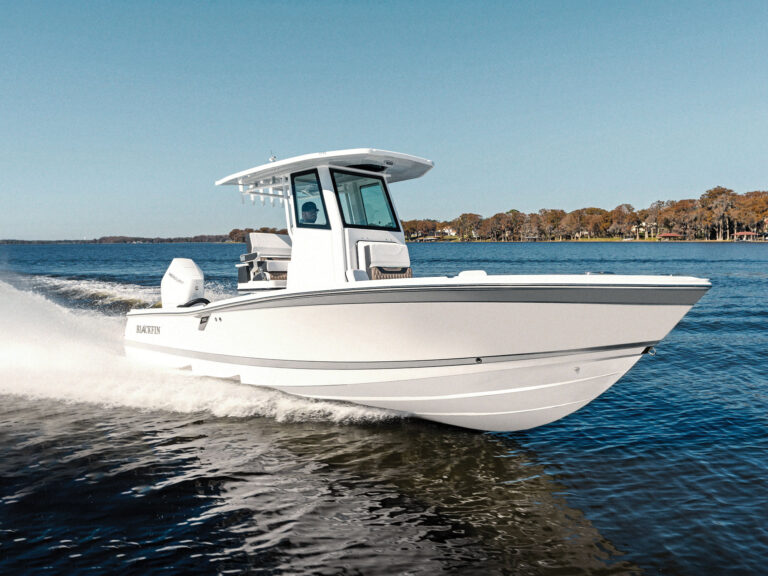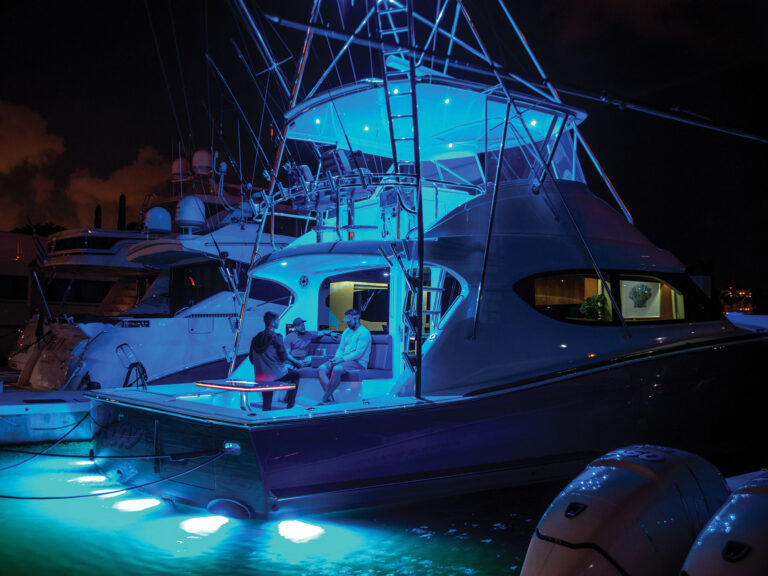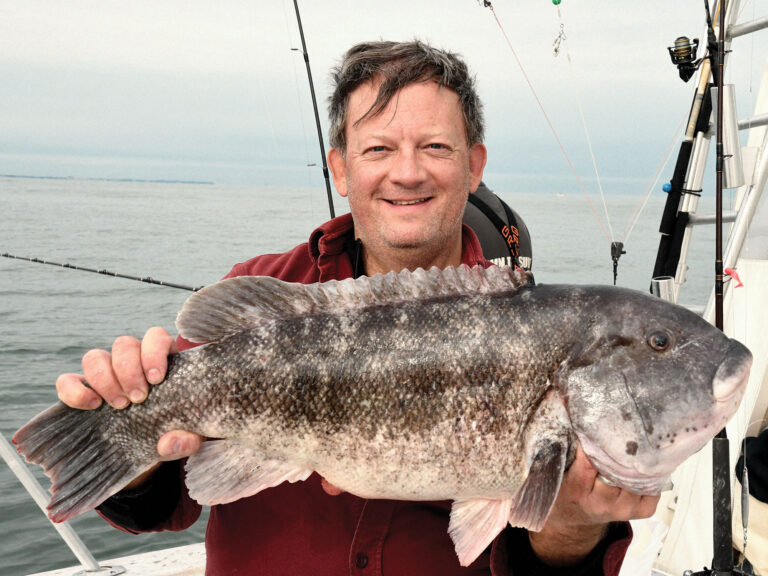Kingfish are among the most popular and widely distributed nearshore gamefish in America. You can find king mackerel, and passionate kingfish anglers, from Massachusetts to Brazil—throughout the Atlantic, Gulf of Mexico, and Caribbean.
Live bait is one of the most common and effective tactics for targeting kingfish. What follows are some perspectives, tips, and tricks on how to catch kingfish on live bait.
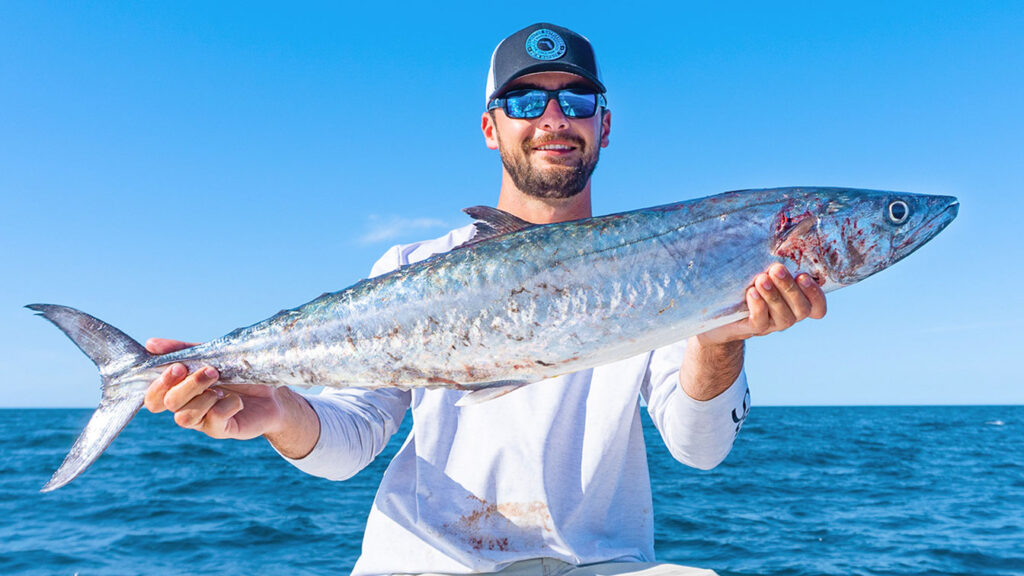
What is the Best Live Bait for Kingfish
Kingfish often form large schools. You can often find them in proximity to bait. In fact, it is the forage in the area you’re fishing that often dictates the best choice in live bait.
This article breaks down some of the best regional choices of kingfish baits in the United States. Because kingfish are so widely distributed, there is perhaps no single “best” live bait choice for all situations. Rather, your best bet for targeting king mackerel involves matching the bait that’s available where you’re fishing.
In the Gulf of Mexico, this might mean fishing menhaden, hardtails (blue runners), mullet, or Spanish mackerel. In South Florida, this likely means fishing with large threadfin herring or pilchards. In the Keys, and other parts, a slow-trolled bonito can be deadly on big kingfish. In the Carolinas or Virginia, you might target kingfish around schools of menhaden. Your bait for big kingfish might be a live bluefish.
If you’re targeting bigger “smoker” kingfish, you might use bigger baits. Many tournament kingfish crews swear by live hardtails. Bigger bluefish, big mullet, and 10 or 12-inch bonito are great choices.
Kingfish Terminal Tackle
Most all kingfish rigs include a section of wire (most often single strand), a lead hook and one or more stinger hooks. Kingfish have a mouth full of razor-sharp teeth.
If you don’t use wire, you’ll get cut off. The stinger hooks are used to combat the kingfish’s tendency to attack the tails of bait. If you just use a lead hook, you’re likely to retrieve quite a few halved baits.
For the lead hook, some anglers opt for j-hooks, others circle hooks. The most common stinger hook is a treble hook.
The VMC 4X Strong O’Shaughnessy Treble is a great choice for a stinger hook. Many anglers opt for size 6. You’ll want to match the size of your lead hook to the size of your bait. A 2/0 hook might work for a pilchard, while you might opt for a 6/0 when using a larger blue runner.
Common Kingfish Rigs
Run your mainline to a fluorocarbon leader. Because kingfish have soft mouths, many anglers prefer to use monofilament mainline—as it has more stretch and is more forgiving when it comes to pulling hooks.
Tie the end of your leader to a barrel swivel. To the other end of the barrel swivel, attach a section of wire leader. You’ll want your finished leader to be about 6 to 8 inches in total length. A haywire twist is perhaps the most common way to attach single-strand wire.
The most common kingfish rig involves attaching 4 to 6 inches of wire to a lead hook. Tie a haywire twist through the eye of the hook.
Attach the stinger hook with another section of wire (some anglers will use heavier gauge wire for this section). The length of the stinger leader will vary with the length of the bait. Attach the stinger hook leader to the lead hook by tying a haywire twist through the eye of the lead hook. If you use multiple stinger hooks, repeat the process.
The Sliding Stinger Rig
The sliding stinger rig is a slick approach that allows you to fish any a variety of bait sizes without rerigging. Start with a six or eight-inch section of wire.
Tie one end to the barrel swivel. Thread the eye of the lead hook onto the wire without tying it—so that it can slide freely. Then tie the other end of the leader to your stinger hook. Once you’re ready to fish, just hook the lead hook through the nose of the bait and run the stinger somewhere in the back third of the bait’s body.
Kingfish Wire Gauge
The size of the wire leader that you’ll choose depends on the size of the fish that you’re targeting and the clarity of the water that you’re fishing. In places with cleaner water, anglers often dial back the size of the wire. In locations with murky water and big kingfish, crews might opt for heavier wire.
The range of kingfish wire leader size runs from about 38 pounds to 130 pounds or so. The heavier the wire, the more forgiving it will be. You’ll also be able to catch more fish without rerigging. To be safe, you might bring a few sizes.
Rods and Reels for Catching Kingfish on Live Bait
You can catch kingfish on live bait using a variety of spinning and conventional tackle options. The AL13 Spinning Reel in size 6000 from 13 Fishing is a great all-around choice for a kingfish spinning reel. It features line capacity and plenty of drag to handle larger fish.
When it comes to conventional tackle, the options are endless. You can target kingfish on everything from light tackle (this article provides the finer points) to heavier trolling outfits.
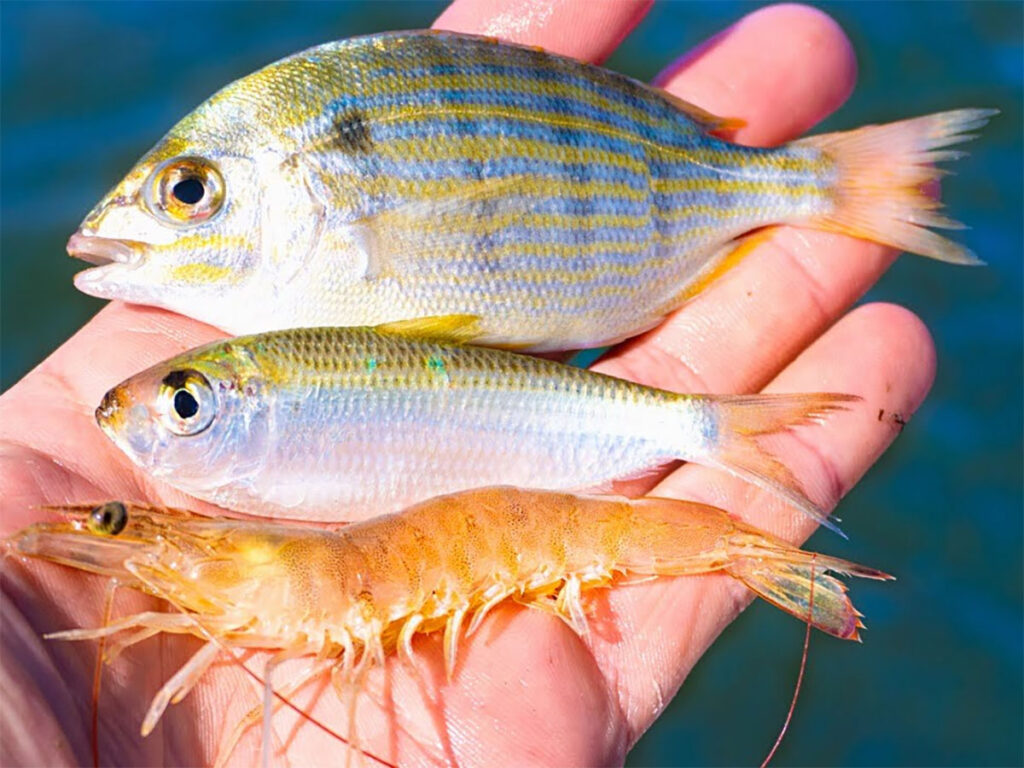
Ways to Catch Kingfish on Live Bait
There are a variety of ways to target kingfish on live bait. One of the most effective and fun involves drift fishing. This article provides a breadth of approaches used by tournament kingfish crews and anglers from different regions.
Drift Fishing Live Bait
When drifting for kings, set up in a place where you find action. It might be around schools of bait or near a ledge or drop-off. You’ll then set up with four or five rods fishing different aspects of the water column.
You might free line three baits—one off the bow, one off the stern, and a third cast and drifting past the other two. You’ll then fish two deeper rods, each with a live bait held at depth with a weight.
If you plan this style of fishing, and have the livewell capacity, live chumming can be a super effective and exciting way to draw and keep kingfish around the boat. This involves taking scoops of bait and tossing them into the water. If you’re offshore and there are predators lurking, these baits will stick close to your boat—trying to use it for protection.
The school of bait effectively draws kingfish and other predators to your boat. This not only results in more bites, but you might even get a close-up view of kingfish skying on baits. If you’re drifting the edge in places like South Florida, you might pick up not only kingfish bites but sailfish, dorado, and other gamefish.
If you’re free-lining baits on spinning tackle (or on a conventional that does not have a lever drag), you can wrap a rubber band around the grip on your rod. Leave the bail open on your reel and run a loop of line under the rubber band. The rubber band will keep the line in place, but allow a drop back when the kingfish consumes your bait. When the line starts peeling away, just close the bail and you’re on.
Slow Trolling
Slow trolling live baits is a great way to catch kingfish. It might involve up to four or five lines.
A common approach involves trolling three baits up top—one in each corner and a rod farther back down the middle of the spread. Some crews also fish two rods with baits deployed deeper in the water column. This can involve using a downrigger to keep the bait in position or deploying a torpedo weight.
The position of the deep baits is sometimes determined in relation to structure and the bottom. Other times it is deployed where you mark schools of kingfish or bait.
The trolling speed for live bait is generally slow. It can range from bumping the boat into and out of gear to running from 1 to 6 or 7 knots. Conventional tackle is best for trolling applications.
Kingfish on Live Bait
No matter where or how you do it, there’s lots to like about targeting kingfish with live bait. If you do it right, it generally doesn’t take long to understand why they call big kingfish smokers (because they smoke your drag!).
FAQ
What is the best live bait for kingfish?
The best live baits are determined by what’s available where you’re fishing. If they are available, many top crews swear by live blue runners as a great kingfish bait.
Can you catch kingfish with bait?
You can catch kingfish on a variety of live and dead baits, as well as with lures.
How to rig bait for kingfish?
There are several ways to do it, but most kingfish rigs involve a section of wire, a lead hook and a stinger hook or two. You hook the lead hook into the bait’s head and run the stinger hook into the bait’s back near its tail.
What size hook for live bait kingfish?
You want to match the size of your lead hook to the size of the bait. For a small bait, like a pilchard or herring, a size two bait hook might be best. For a larger bait, like a blue runner, bonito, or bluefish, you might opt for 6/0 or 7/0 lead hook.
About the author: Elliott Stark is a fisherman, writer, and marine biologist. He publishes FishTravelEat.com and is the author of “The Book on Travel Fishing.”

